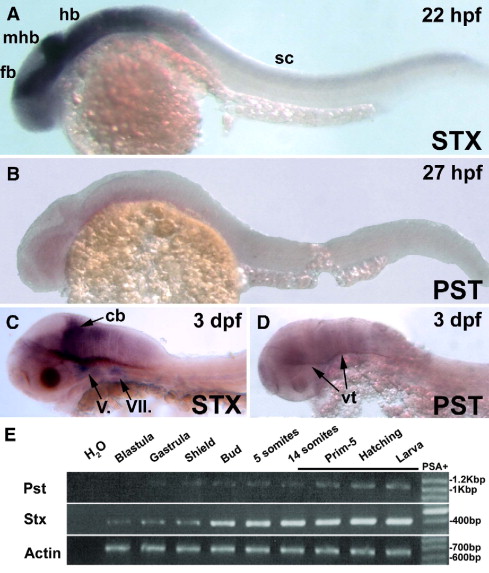Fig. 2 Expression of zebrafish polysialyltransferases Stx and Pst during the first 3 days of development. At 22 hpf, Stx is transcribed in all structures of the central nervous system (A) whereas Pst not detectable at 27 hpf (B). At 3 dpf, the expression of Stx remains strong in the cerebellum and motor nuclei (C), whereas a weak Pst signal becomes visible in brain regions close to the ventricles (arrows in panel D). RT-PCR analysis on developing zebrafish cDNAs reveals a weaker and later transcription of Pst compared to the expression of Stx mRNA (E). Target amplifications were based on exon-specific primers. Actin reactions were conducted using a 1:10 template dilution. The detection of PSA in developing embryos starts around 17 hpf as indicated by a PSA + bar. A?D lateral views, anterior to the left. cb, cerebellum; hb, hindbrain; fb, forebrain; mhb, midbrain?hindbrain boundary; sc, spinal cord; V., trigeminal nucleus; VII., facial nucleus.
Reprinted from Developmental Biology, 306(2), Marx, M., Rivera-Milla, E., Stummeyer, K., Gerardy-Schahn, R., and Bastmeyer, M., Divergent evolution of the vertebrate polysialyltransferase Stx and Pst genes revealed by fish-to-mammal comparison, 560-571, Copyright (2007) with permission from Elsevier. Full text @ Dev. Biol.

